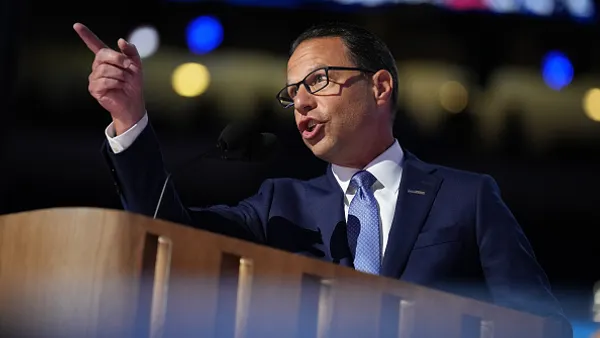Dive Brief:
- While CFOs have a unique vantage point that can sometimes position them for success in the chief executive officer seat, a Spencer Stuart report found that only 8% of CFOs-tuned-CEOs steered their organizations to the top quartile of performance.
- Authors Claudius A. Hildebrand, Joel von Ranson and Jenna Bayard studied more than 1,300 CEO transitions to predict the profitability in the top managerial seat based on the individual’s previous role.
- “We were not expecting CFOs to have a tendency toward a worse outcome. These finance executives have an enterprise wide role, a lot of board experience and they understand valuation,” said Hildebrand and von Ranson in an interview. In order to see success, the finance chiefs need to tap into their intuitiveness over their analysis skills, they said.
Dive Insight:
The leapfrog CEO, or those promoted from two or three levels down, outperformed CEOs with a CFO background when it came to driving growth, according to the sudy.
“Leapfrog CEOs tend to be younger than any of their peers, have significant profit and loss experience and they show remarkable capabilities and capacity early to be considered in this process and given the trust of the position,” said Hildebrand.
The CFO to CEO pipeline has become an increasingly common route to the tope of the C-suite. For example, AMC Networks’ CFO was recently promoted to the top seat on Aug. 9. But finance execs moving to the CEO position need to focus on growth and risk taking in order to see success, the study said.
Through their research, one area that Hildebrand and von Ranson found where CFOs-turned-CEOs especially struggled in was letting go of the financial helm of the business. “Those who saw success were good at letting go of finance, so that they could stretch their muscles and become stronger in other areas like growth, risk taking investment, innovation, etc.,” he said.
Although CFOs understand that being a successful CEO has a lot to do with leaning into risk, many do not. As the finance chief, they focus a lot on instilling discipline into an organization, which in turn causes them to be reluctant to take risks. According to Hildebrand, this is where these promoted CFOs struggle.
The purpose of this study, the authors said, was not to deter CFOs from taking on the top executive position, but to reposition their mindset to find success in it. One way they can do this is taking on a dual role such as CFO-COO before moving up the ladder, they said.
The recent rise in the CFO-COO duality may allow for a smoother transition to the promotion to the CEO seat. “We heard many of these stories in our interviews,” said Hildebrand and von Ranson. “The differentiating factor that we heard in those interviews of successful cases was that CFO-COOs broadened their aperture early and widely,” they said.
Hildebrand and von Ranson also suggest that new leaders need to make some bold moves early on. “These first few months as CEO, you should do something extravagant for the company, stand in a slightly undisciplined way to send a signal to the company that you aren’t just going to be a cost management leader,” said Von Ranson.













